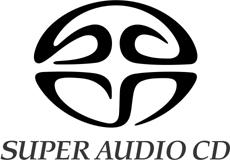Aug 31, 2006 News audite stays with SACD-format
from pizzicato 6/2006
MAXIMUM QUALITY, ALSO FOR THE ALARM CLOCK-RADIO
Ludger Böckenhoff of Audite remains firmly convinced by the SACD. After years of being disgruntled, the classic labels are now looking into the future somewhat more optimistically. Not only did sales of their products not continue to decrease in 2005, but they even rose slightly. One of the great hopes of the field was the Super Audio Disc, SACD, with Surround Sound, which guarantees a new, improved listening comfort. The major labels have now unfortunately abandoned this direction because they are waiting for a new format with yet more storage capacity, the Blue Ray Disc. Others stand firmly by the SACD, and one of these label heads is Ludger Böckenhoff of Audite. Rémy Franck had the following conversation with him.
SACD is still in the picture and you are one of the defenders of this format. On the other hand, one hears that other labels are already abandoning ship. Do you still believe in the SACD format?
It is the so-called major labels that are now slowly but surely dropping their original support of this format, probably because the next sound-carrier format – the Blue Ray Disc - is already very openly being worked on. That is without doubt a business interest, of course, an interest which applies to the much larger video market. For video, a new format with a much higher data quantity could really be a necessity; for me, as the person responsible for a purely audio music publishing company, everything that goes beyond the SACD is, at the moment, a step backwards. The SACD is easy to use, it allows for reproduction of six audio channels at an unbelievably high standard where nothing is lost – you surely can’t beat that with still denser formats. When new formats are forced into the music field, consumers will look back onto the period of the SACD with wistful nostalgia, a time of plug and play in the best sense of the words. But things haven’t gone that far yet, and even if the majors are no longer making SACDs, there are nonetheless very heavyweight labels that stand by it firmly. Besides all this, the reception of a CD is considerably worse than that of an SACD. The cliché of the throwaway medium is associated with the CD, and that is fortunately not true of the SACD!
Is the success of the SACD as such, then, already visible on the market, are your sales higher because you produce SACDs?
That varies widely from market to market, from region to region. In America, for example, the SACD is quite successful. The clients in Europe react in very different ways. Germany is certainly also a positive market for this kind of sound carrier, whereas other countries take to it less enthusiastically.
Have you been able to find out on what kind of system people listen to classical SACDs? Are they usually copied onto home cinema systems or do many people already have high quality Surround systems?
I don’t have any verifiable statistics! Let’s be realistic: probably 98% of our SACDs are played on normal CD players, with a number of these on the alarm clock-radio in the bedroom or on the kitchen radio and the rest on the stereo system. But that can’t keep me, as a producer, from offering a medium that is capable of delivering maximum quality. And that is the SACD!
And the Surround effect is for you, as always, a clear advantage: many people probably don’t know what they’re missing when they haven’t heard Surround, do they?
Well, I remain convinced by Surround, as much as ever! But you mustn’t view it in isolation from the content, from the programme and its interpretation. Surround by itself is of no use if the music itself is not of high quality.
